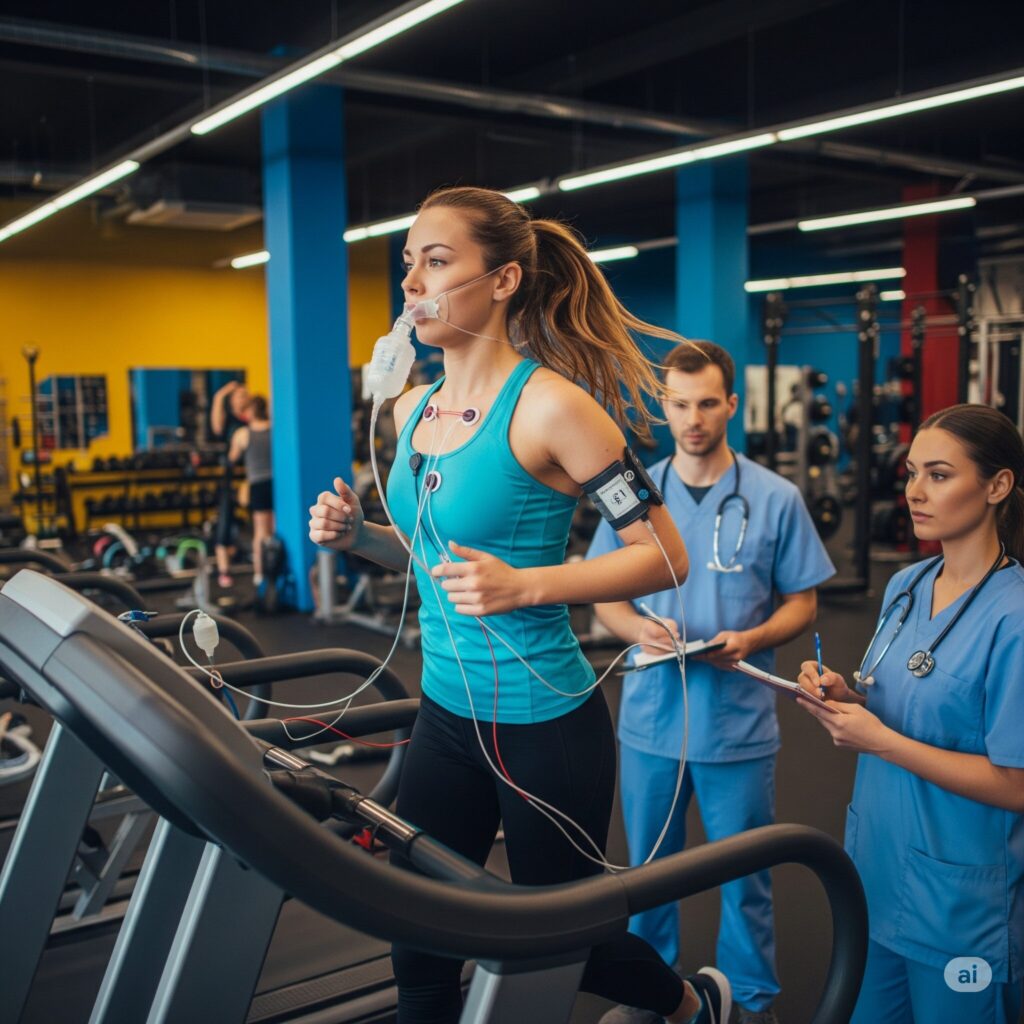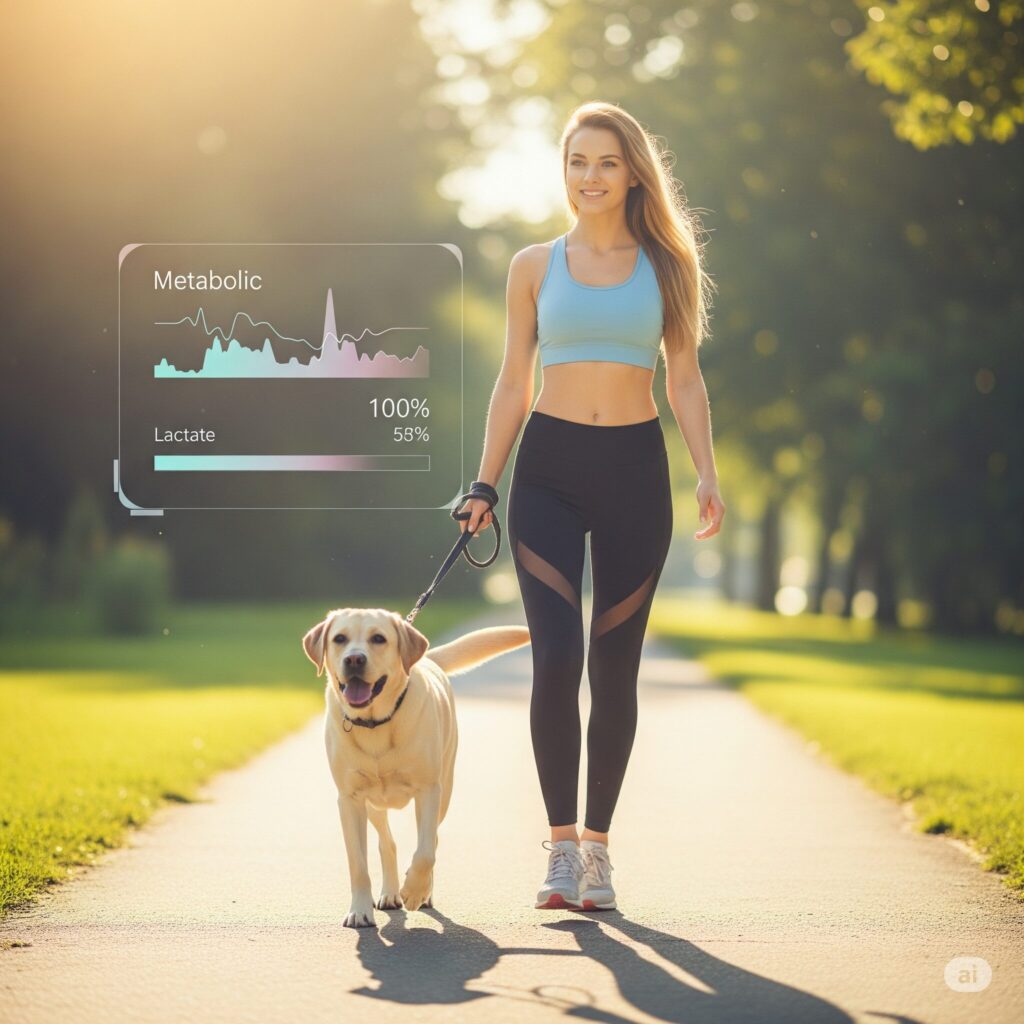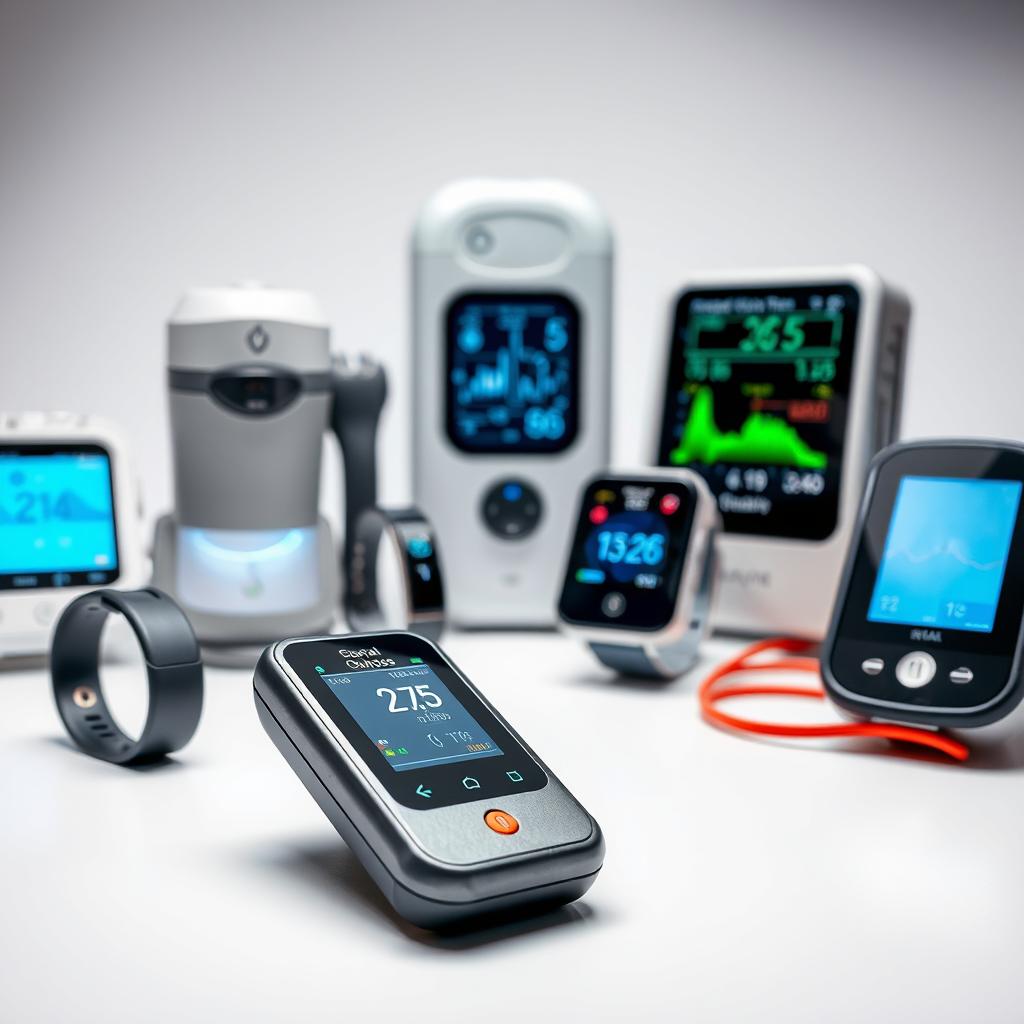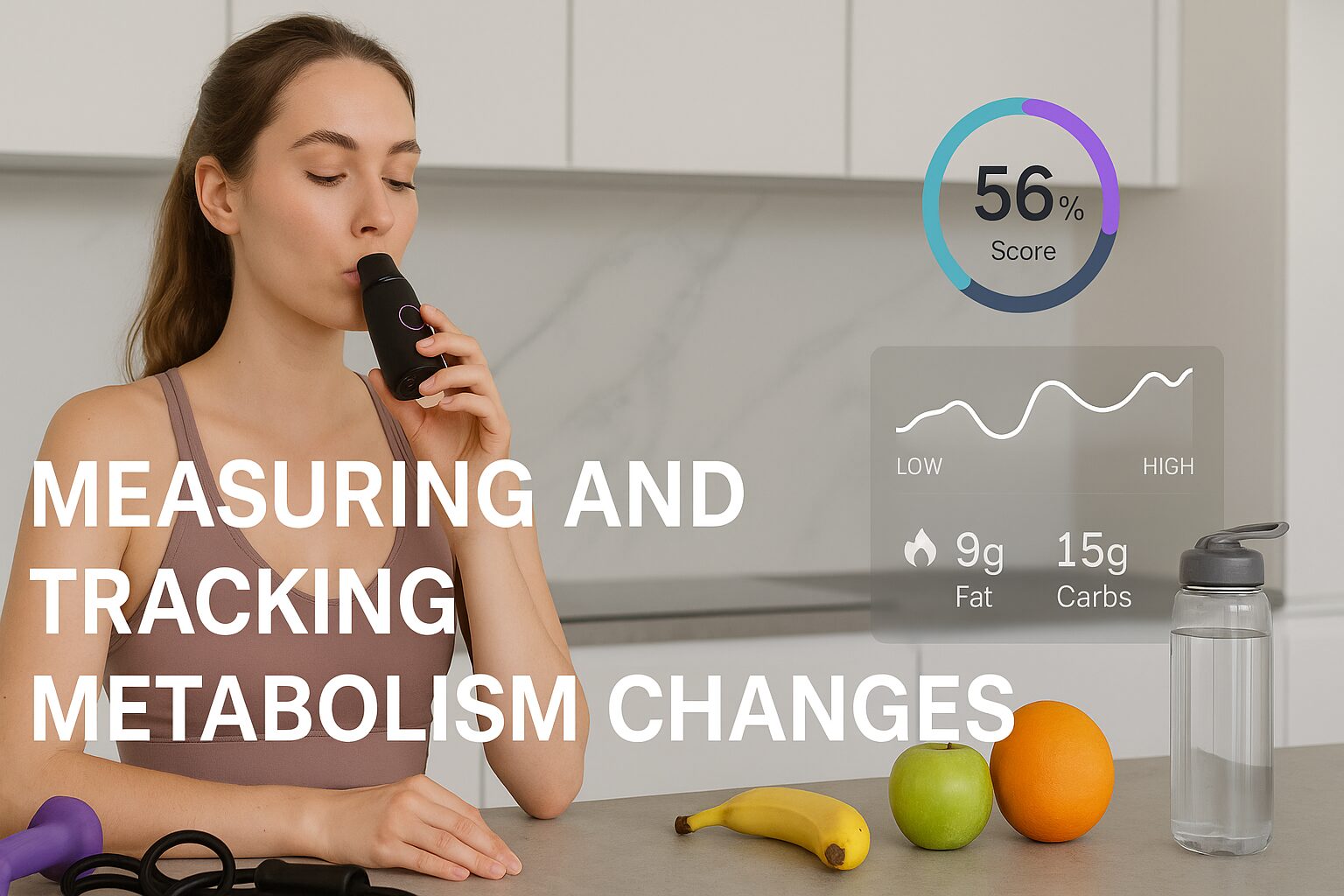Measuring and Tracking Metabolism Changes
Ever feel like your body has a mind of its own? You eat salads, hit the gym, and still, the scale doesn’t budge. The culprit might be how your metabolism changes. Understanding how your body burns energy can be a game-changer for weight loss and overall health.
Metabolic testing reveals how efficiently your body uses oxygen and burns calories during workouts. Devices like Lumen take it a step further, offering real-time CO2 analysis. With over 60 million breath tests recorded, it’s like having a pocket-sized detective for your metabolic rate.
Whether you’re a world-class athlete or a busy mom, tracking your metabolism isn’t just for gym enthusiasts. Sneaky factors, like late-night snacks, can trick your body into slowing down. But with the right tools, you can unlock better results. Real users have seen up to 12% body weight loss in six months and a 30% improvement in metabolic flexibility.
Understanding Metabolism and Its Importance
Your body’s engine runs 24/7, but how well is it really working? Metabolism is the process that keeps your energy flowing, from powering your morning jog to fueling your late-night Netflix binge. It’s not just about burning calories—it’s about how efficiently your cells convert food into fuel.
What is Metabolism?
Think of your mitochondria as tiny power plants inside your cells. They convert 90% of your body’s energy, keeping everything from your brain to your muscles running smoothly. When your metabolism is working well, you feel energized and ready to tackle the day. When it’s not, you might feel sluggish, even after a good night’s sleep.
Why Tracking Metabolism Matters
Poor metabolic flexibility can increase your risk of diabetes by 65%. That’s why understanding your metabolism is crucial. It’s not just about counting calories—it’s about knowing how your body uses them. Stress, sleep, and even the timing of your meals can all impact your metabolic rate. By tracking it, you can make smarter choices for your health.
How to Measure Your Metabolism
Curious about how your body burns energy while binge-watching your favorite show? Measuring your metabolic rate doesn’t require a lab coat or a treadmill. There are simple, effective ways to understand how your body uses oxygen and burns calories, even when you’re at rest.

Resting Metabolic Rate (RMR) Testing
RMR testing is the lazy person’s dream. You sit back, relax, and breathe into a hood or mouthpiece for 15-30 minutes. This test shows how many calories your body burns while doing absolutely nothing. It’s perfect for understanding your couch potato potential.
Maximum Volume of Oxygen (VO2 Max) Testing
If you’re more active, VO2 Max testing is your go-to. It involves a treadmill workout that gets progressively harder. This test measures the maximum amount of oxygen your body can use during intense exercise. It’s a great way to gauge your stamina for weekend hikes or marathons.
Lactate Threshold Testing
For the fitness enthusiasts, lactate threshold testing is key. It requires medical supervision and measures the point at which lactic acid builds up in your muscles. Even if your workout is just walking the dog, understanding this can help you optimize your routine.
Pro tip: Skip the $500 lab test. Morning breath analysis with devices like Lumen can give you comparable insights. Your metabolism during Schitt’s Creek reruns might predict your weight loss success better than gym time. Now that’s a fun fact!
Where to Get Metabolic Testing Done
Wondering where to start with metabolic testing? You’ve got options. From doctor’s offices to your living room, there’s a way to test your metabolism that fits your lifestyle. Let’s explore the pros and cons of each.

Medical Facilities vs. Fitness Centers
Medical facilities offer the most accurate results. They use advanced equipment to measure your insulin levels, hormone balance, and overall health. The downside? It can be pricey, and 40% of insurance plans don’t cover it.
Fitness centers, on the other hand, often provide “free” tests. But beware—these are sometimes just sales pitches in disguise. If you’re serious about your weight and health, a doctor’s office is the safer bet.
At-Home Metabolism Testing Kits
For convenience, at-home kits are hard to beat. Brands like EverlyWell test cortisol and thyroid hormones, giving you insights into your health without leaving your couch. Lumen, another popular option, is HSA/FSA eligible and fits in your makeup bag.
Real users like Tina, 33, combine Lumen with Peloton for optimized workout nutrition. It’s not just another wellness gimmick—it’s a $200 investment in your weight and health.
| Option | Pros | Cons |
|---|---|---|
| Medical Facilities | Accurate results, comprehensive health insights | Expensive, limited insurance coverage |
| Fitness Centers | Often free, accessible | May lack accuracy, potential sales pitch |
| At-Home Kits | Convenient, affordable, HSA/FSA eligible | Less comprehensive than medical tests |
Using Metabolic Testing for Weight Loss and Fitness
Your metabolism might be the missing piece in your weight loss puzzle. Metabolic testing can reveal how your body burns energy, helping you make smarter choices for your lifestyle. But what do the results mean, and how can you use them to your advantage?

Interpreting Your Test Results
Metabolic testing can uncover hidden food intolerances that might be sabotaging your diet. For example, your “perfect” meal plan could be slowing down your glucose processing. A 2020 study found that high-protein diets increase the thermic effect of food by 15%, making chicken breasts a better metabolism booster than espresso shots.
Understanding your lactate threshold can also help optimize workouts. If lactic acid builds up too quickly, your muscle recovery slows down. Devices like Lumen can guide you to time carb intake with your metabolic states, just like Ryan, who lost 23 pounds using this strategy.
Adjusting Your Lifestyle Based on Results
Small changes can have a big effect. For instance, drinking water can boost your metabolic rate by 30%, according to 2023 research. Proper hydration acts like a natural Red Bull for your mitochondria, keeping your energy levels steady.
Dr. Hyman warns against chronic carb-burning patterns, which can lead to fatigue and weight gain. Instead, focus on balanced meals that support your lifestyle and fitness goals. Here’s a quick guide to help you adjust:
| Adjustment | Benefit | Example |
|---|---|---|
| Increase Protein | Boosts thermic effect of food | Add chicken or tofu to meals |
| Stay Hydrated | Enhances metabolic rate | Drink water before meals |
| Time Carbs | Optimizes glucose use | Use Lumen to track metabolic states |
By interpreting your test results and making these adjustments, you can take control of your weight loss journey and overall health. For more insights, check out this guide on metabolic testing.
Tools and Devices for Tracking Metabolism
Ever wondered how tech can turn your morning breath into a fitness coach? Metabolic tracking has evolved from bulky lab machines to sleek, pocket-sized gadgets. Today, you can measure your body’s energy use with precision, right from your living room.

Traditional Methods: Metabolic Carts and Chambers
In the past, tracking your metabolism meant spending hours in a lab hooked up to a metabolic cart. These devices measure oxygen and carbon dioxide levels to calculate calorie burn. While accurate, they’re expensive and time-consuming.
Metabolic chambers take it a step further. They’re like tiny rooms where you live for 24 hours while the system tracks every breath. It’s the gold standard for research, but not exactly practical for everyday use.
Modern Innovations: Lumen and Other Devices
Enter Lumen, a handheld device that matches the accuracy of lab tests. It analyzes your breath in real-time, showing whether your body burns fat or carbs for fuel. With over 300,000 users, including Olympic trainers, it’s a game-changer for fitness enthusiasts.
What sets Lumen apart? It’s backed by peer-reviewed research and boasts a 98% user satisfaction rate. Plus, it’s HSA/FSA eligible, making it a smart investment for your health. Ready to try it? Check out Lumen’s shop for more details.
From frustrated dieters to pro athletes, Lumen helps users optimize their system for better results. Whether you’re training for a marathon or just trying to shed a few pounds, this device makes metabolic tracking simple and effective.
Practical Tips to Boost or Slow Down Your Metabolism
Your couch might be the enemy, but your metabolism doesn’t have to be. Whether you’re battling a desk job or late-night cravings, these strategies turn everyday habits into calorie-torching opportunities. No lab coats required—just real-life tweaks with big effect.

Exercise and Physical Activity
Standing burns 50% more calories than sitting. Try pacing during Zoom calls—it’s Heather’s secret to burning 300 extra calories a week. Even fidgeting counts. Red light therapy, like the kind used in spas, can increase mitochondrial density by 20%. That’s like upgrading your exercise results while binge-watching.
Diet and Nutrition
Your post-workout meal matters. Heather uses metabolic data to time her protein intake, optimizing recovery. Swap pre-workout powders for real food—think eggs or Greek yogurt. A 2023 study found that balanced meals keep energy steady all day, unlike sugar crashes from processed snacks.
Hydration and Sleep
Grandma knew best: afternoon naps beat energy drinks for metabolic recovery. Blue light from screens? It sabotages sleep quality. Try a bedtime tea (not apple cider vinegar) to supercharge overnight fat burn. Hydration alone can spike your metabolic rate by 30%—cheaper than a gym membership.
| Tip | Metabolic Effect | Example |
|---|---|---|
| Move More | Burns extra calories | Standing desk or walking calls |
| Eat Smart | Balances protein and carbs | Post-workout Greek yogurt |
| Rest Well | Enhances sleep recovery | Blue light blockers by 8 PM |
Taking Control of Your Metabolic Health
Your health is more than just a number on the scale—it’s a reflection of how your body works. Did you know 65% of metabolic syndrome cases go undetected? This silent issue can lead to serious disease if ignored. But there’s good news: small changes can make a big difference.
Improving your metabolic health isn’t just about weight loss. It’s about boosting your energy, mood, and even your longevity. Real users of tools like Lumen report an average 12% weight loss in six months. Imagine what that could do for your confidence and overall well-being.
Start with simple swaps. Swap sugary snacks for protein-rich options. Add more movement to your day, even if it’s just pacing during calls. These small steps can restore balance to your body and help you feel like your best self.
Your future self will thank you for taking action today. Because when it comes to health, prevention is always better than cure.
📚 References for Measuring and Tracking Metabolism Changes
- Speakman, J. R., & Selman, C. (2003). Physical activity and resting metabolic rate. Proc Nutr Soc, 62(3), 621–634.
- Levine, J. A., et al. (1999). Role of nonexercise activity thermogenesis in resistance to fat gain in humans. Science, 283(5399), 212–214.
- Galgani, J. E., & Ravussin, E. (2008). Energy metabolism, fuel selection and body weight regulation. Int J Obes (Lond), 32(Suppl 7), S109–S119.
- Müller, M. J., et al. (2016). Metabolic adaptation to caloric restriction and subsequent refeeding. Am J Clin Nutr, 102(4), 807–819.
- Johnston, C. S., et al. (2005). Vinegar ingestion at bedtime moderates waking glucose concentrations in adults with well-controlled type 2 diabetes. Diabetes Care, 28(2), 282–283.
- Acheson, K. J., et al. (1980). Caffeine and coffee: their influence on metabolic rate and substrate utilization. Am J Clin Nutr, 33(5), 989–997.
- Cermak, N. M., et al. (2012). Protein supplementation augments the adaptive response of skeletal muscle to resistance-type exercise training. Am J Clin Nutr, 96(6), 1454–1464.
- Boschmann, M., & Steiniger, J. (2003). Water-induced thermogenesis. J Clin Endocrinol Metab, 88(12), 6015–6019.
- Ronti, T., et al. (2006). The endocrine function of adipose tissue. Clin Endocrinol (Oxf), 64(4), 355–365.
- Lumen. (2023). Clinical Validation of Lumen as a Metabolic Tracker. Lumen Scientific Advisory Board.
